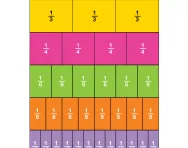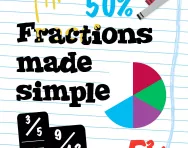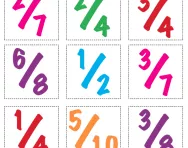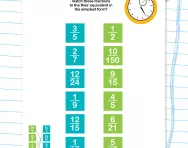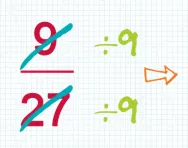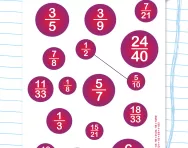Important update from TheSchoolRun
For the past 13 years, TheSchoolRun has been run by a small team of mums working from home, dedicated to providing quality educational resources to primary school parents. Unfortunately, rising supplier costs and falling revenue have made it impossible for us to continue operating, and we’ve had to make the difficult decision to close. The good news: We’ve arranged for another educational provider to take over many of our resources. These will be hosted on a new portal, where the content will be updated and expanded to support your child’s learning.
What this means for subscribers:
- Your subscription is still active, and for now, you can keep using the website as normal — just log in with your usual details to access all our articles and resources*.
- In a few months, all resources will move to the new portal. You’ll continue to have access there until your subscription ends. We’ll send you full details nearer the time.
- As a thank you for your support, we’ll also be sending you 16 primary school eBooks (worth £108.84) to download and keep.
A few changes to be aware of:
- The Learning Journey weekly email has ended, but your child’s plan will still be updated on your dashboard each Monday. Just log in to see the recommended worksheets.
- The 11+ weekly emails have now ended. We sent you all the remaining emails in the series at the end of March — please check your inbox (and spam folder) if you haven’t seen them. You can also follow the full programme here: 11+ Learning Journey.
If you have any questions, please contact us at [email protected]. Thank you for being part of our journey it’s been a privilege to support your family’s learning.
*If you need to reset your password, it will still work as usual. Please check your spam folder if the reset email doesn’t appear in your inbox.
What are equivalent fractions and simplifying fractions?

What are equivalent fractions and simplifying fractions?
When two fractions are equivalent, this means they are the same in terms of shape and size, but are expressed using different numbers.
For example, these fractions are exactly the same, but because the larger shape is split into a different number of segments in each case, the fraction is expressed in a different way:
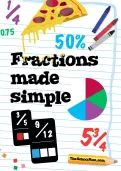
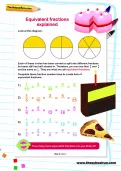
Claim FREE Fractions Resources Today
- Fractions workbook
- Interactive fractions tutorials
- 100s of worksheets & games
Fractions equivalency in KS1 and KS2
Children first learn about halving and quartering a shape in Key Stage 1.
In Year 3 they are introduced to the concept of equivalence, where they are shown different shapes like the ones above and asked to write them as fractions.
Children continue to practise equivalent fractions in Year 4 (such as 6/8 and 3/4 or 7/10 and 70/100) and it is expected that they will still need diagrams to make this clear to them at this stage.
Children in Year 4 also start learning about decimals and need to know that 0.25 is equivalent to 1/4, 0.5 is equivalent to 1/2 and 0.75 is equivalent to 3/4. This can be demonstrated with the use of some blank hundred squares:
In Year 5, children are expected to find equivalent fractions without the use of diagrams. At this stage, they would learn that whatever the numerator is multiplied by the denominator must also be multiplied by the same number, for example:
Children in Year 5 also need to relate fractions to their decimal representations (for example, they would need to know that 10/100 is 0.1 and 3/6 is equivalent to 0.5).
In Year 5, children would also need to order a set of fractions that had different denominators. For example:
1/3 2/4 5/6 2/3 1/12
One way of doing this would be to change all the denominators so that they were the same. This would mean multiplying the numerator and the denominator by the same number.
- You could change all the denominators to 12, so the first fraction would be multiplied by 4 to make 4/12.
- The second fraction would be multiplied by 3 to make 6/12.
- The third fraction would be multiplied by 2 to make 10/12.
- The fourth fraction would be multiplied by 4 to make 8/12.
- The last fraction would stay the same.
- This would mean you could compare and order the five fractions.
In Year 6, children need to use their knowledge of equivalent fractions to simplify fractions.
Simplifying a fraction means finding an equivalent fraction where the numbers are reduced as much as possible.

For example, if I was given the fraction 6/48 and asked to simplify it, I could divide both numerator and denominator by 2 to make 3/24, I could then divide both numbers by 3 to make 1/8. A quicker way of simplifying the original fraction would be to divide both numbers by 6 to make 1/8.


